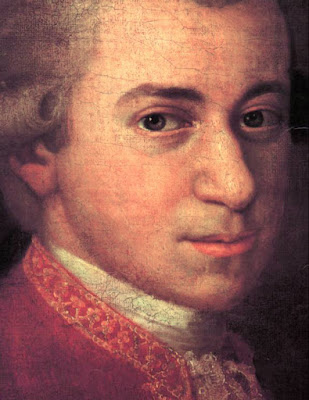XXIX. BEETHOVEN, Ludwig van (1770-1827)
Note the excised dedication to Napoleon.
Ferdinand Ries -- Beethoven's pupil -- writes:
"In writing this symphony, Beethoven had been thinking of Bonaparte, but Bonaparte while he was First Consul. At that time Beethoven had the highest esteem for him, and compared him to the greatest consuls of Ancient Rome. Not only I, but many of Beethoven's closer friends, saw this symphony on his table, beautifully copied in manuscript, with the word 'Bonaparte' inscribed at the very top of the title-page and 'Ludwig van Beethoven' at the very bottom ... I was the first to tell him the news that Bonaparte had declared himself Emperor, whereupon he broke into a rage and exclaimed, 'So he is no more than a common mortal! Now, too, he will tread underfoot all the rights of Man, indulge only his ambition; now he will think himself superior to all men, become a tyrant!' Beethoven went to the table, seized the top of the title-page, tore it in half and threw it on the floor. The page had to be recopied, and it was only now that the symphony received the title Sinfonia eroica."
This performance is one of the finest.
For details on this important symphony, this Wikipedia page has excellent information.
Many musicologists tag this symphony as the start of the "Romantic movement."
One funny incident is also described by Ries:
At 12:00 in the First Movement, just at the end of the development section, the strings are insinuating a Bb7 dominant and the horn plays an Eb triad -- a total clash!
At the first rehearsal, Ries erupted with outrage, assuming it was a mistake, while Beethoven insisted it was correct and threatened to "box his ears."
Not to be missed is Eroica -- the fantastic BBC made-for-TV movie about the very first rehearsal of the symphony -- starring Ian Hart as Beethoven and the Orchestre Révolutionnaire et Romantique. This is both a film and a performance. Hart makes a fantastic Beethoven, and it is a thrill to watch both musicians, noble audience, and even the servants react to this revolutionary music! An astonished Haydn shows up towards the end!



















































